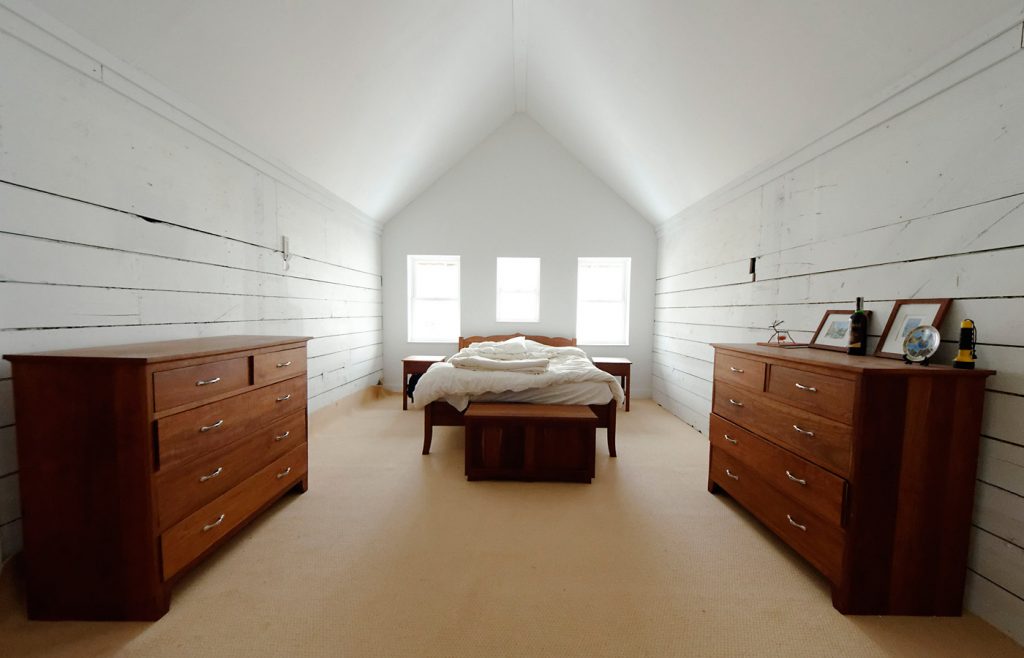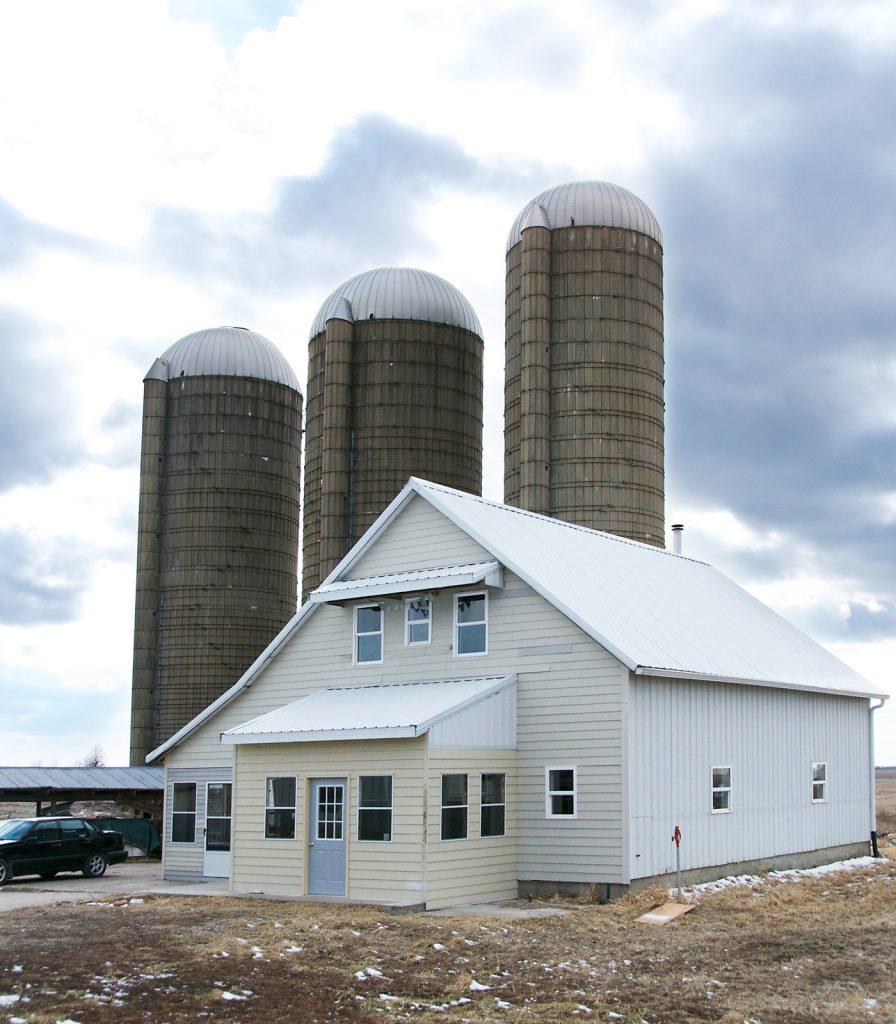
There’s a small house on Highway 1 north of Fairfield that has a secret history. If you saw it from the outside—and maybe even the inside—you would never guess its former identity.
Drive down any country road in Iowa and you’re bound to see a corn crib standing empty and unused, slowly falling into disrepair. In the heyday of the family farm these structures stored corn, still on the cob. Community developer Dan Walker has proven that corn cribs can still serve a purpose, one their builders probably never imagined—housing!
Let me give you a walkthrough of Dan’s converted corn crib. Enter through the east into a typical Iowa mudroom, then into an entirely open first floor. You’ll find yourself in a spacious great room with a kitchen on the left and music room on the right; a wood stove on the west wall brightens and warms the room. A simple staircase begins in the foyer and makes a 45-degree turn halfway up to the second floor, where it separates two bedrooms. The cathedral ceiling augments the lofty feel on this level, while east and west windows add to the impressive feeling of space felt throughout the house. The furnishings are sparse and well chosen, and with the exception of the gray flooring, the interior is entirely white. The most noticeable peculiarity in the entire home is the unusual slatted design of the walls.

Dan came up with the idea while planning his sustainable community, Cypress Villages. “In 2008 we were on the cusp of building roads; we built our first house,” he said. “We were just ready for everything, and we said: where are we going to put our interns? We looked at the old corn crib and realized it was the most structurally sound building on the property. This thing was built like a fortress!”
Dan explained why: “An elevator would bring grain to the upper floor. That’s why corn cribs were built so strong; they would hold a tremendous amount of grain. The east and west sides were open—grain wagons would drive through where we’re sitting.”
To make the building habitable, end walls, a new roof, and siding were added. With the help of carpenters Andrew and Jim Busscher, Dan opened the slatted interior walls in four places and framed the gaps to create what are now the kitchen, music room, study, and sitting area. Next, the Busschers installed flooring and built a staircase to the second floor. Last installed were a wood stove, outdoor showers, and a sink.
Dan chose materials for their durability and cost: plywood flooring, a metal roof, reused windows, and non-traditional plumbing. This kept renovation costs around $20,000. For a final touch, the carpenters built 13 wooden bunk beds, so the corn crib resembled a youth hostel.
Over the next two years the building was used only in the summer, for interns, but in the fall of 2011 Dan decided to fully transform the crib into a four-season home.

“The main thing was to make sure the building would hold heat,” he explained, “so our focus was insulation. We opened up the walls and Kevin Frisbee of Freedom Foam came and put in the expanded insulation. The foam is maybe not the world’s most green, but it lasts forever and works great. This was a pretty leaky building and now it’s pretty darn tight. It’s 1,700 square feet, I’ve got 800 square feet of storage under the eaves, and I heat it with a secondhand, not very efficient wood stove.”
In addition to the insulation, the mudroom and south porch were added on, along with drywall on the perimeter walls and one coat of white spray paint throughout. This brought the cost of the second-stage renovation to around $10,000. By hiring local contractors and patronizing Fairfield businesses, much of the money Dan spent on his home stayed right here in town.
When the corn crib finally became a home, Dan chose to furnish it with items made and purchased locally as well. “All the furniture—the beds, the dressers, the bookshelves—are from Neil Cunningham’s store on the square, it’s all made by the Amish down in Cantril.”
Earlier, Dan had shared his philosophy on constructing new homes: “How can you build the lowest cost good housing for people? I’m all about good housing, not cheap, bad housing—cheap, bad housing drives me crazy.”
From start to finish, the transformation from corn crib to family home cost less than $35,000. In an economy where home ownership seems more and more out of reach for many Americans, this former farm building stands as an inspiring reminder that affordable housing can be spacious, eco-friendly, beautiful, and most of all, attainable.

Thousands of empty corn cribs, silos, and barns are scattered across the landscape, just waiting for their turns to be useful again. My vote for the next renovation goes to a silo—as long as it has a curly slide, a fireman’s pole, and an observation deck on the roof!
Leanne Hayes is dedicated to living sustainably on a budget.
